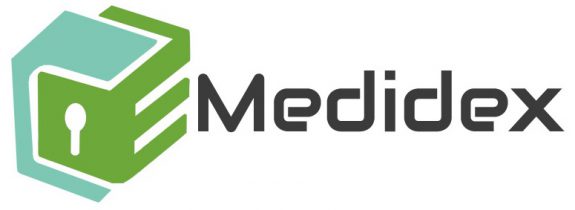Disclaimer:
Medidex is not a provider of medical services and all information is provided for the convenience of the user. No medical decisions should be made based on the information provided on this website without first consulting a licensed healthcare provider.This website is intended for persons 18 years or older. No person under 18 should consult this website without the permission of a parent or guardian.
loteprednol etabonate and tobramycin
Overview
What is Zylet?
Zylet (loteprednol etabonate and tobramycin ophthalmic suspension) is a sterile, multiple dose topical anti-inflammatory corticosteroid and anti-infective combination for ophthalmic use. Both loteprednol etabonate and tobramycin are white to off-white powders. The chemical structures of loteprednol etabonate and tobramycin are shown below.
Loteprednol etabonate:
Chemical name: chloromethyl 17α-[(ethoxycarbonyl)oxy]-11-hydroxy-3-oxoandrosta-1,4-diene-17-carboxylate
Tobramycin:
Chemical Name:
O-3-Amino-3-deoxy-α-D-glucopyranosyl-(1→ 4)-O- [2,6-diamino-2,3,6-trideoxy-α-D-ribo-hexopyranosyl- (1→ 6)] -2-deoxystreptamine
Each mL contains
What does Zylet look like?



What are the available doses of Zylet?
Zylet contains 5 mg/mL loteprednol etabonate and 3 mg/mL tobramycin. ()
What should I talk to my health care provider before I take Zylet?
How should I use Zylet?
Zylet is a topical anti-infective and corticosteroid combination for steroid-responsive inflammatory ocular conditions for which a corticosteroid is indicated and where superficial bacterial ocular infection or a risk of bacterial ocular infection exists.
Ocular steroids are indicated in inflammatory conditions of the palpebral and bulbar conjunctiva, cornea and anterior segment of the globe such as allergic conjunctivitis, acne rosacea, superficial punctate keratitis, herpes zoster keratitis, iritis, cyclitis, and where the inherent risk of steroid use in certain infective conjunctivitides is accepted to obtain a diminution in edema and inflammation. They are also indicated in chronic anterior uveitis and corneal injury from chemical, radiation or thermal burns, or penetration of foreign bodies.
The use of a combination drug with an anti-infective component is indicated where the risk of superficial ocular infection is high or where there is an expectation that potentially dangerous numbers of bacteria will be present in the eye.
The particular anti-infective drug in this product (tobramycin) is active against the following common bacterial eye pathogens:
Staphylococci, including and (coagulase-positive and coagulase-negative), including penicillin-resistant strains. Streptococci, including some of the Group A-beta-hemolytic species, some nonhemolytic species, and some , , most strains, , and and some species.
Apply one or two drops of Zylet into the conjunctival sac of the affected eye every four to six hours. During the initial 24 to 48 hours, the dosing may be increased, to every one to two hours. Frequency should be decreased gradually as warranted by improvement in clinical signs. Care should be taken not to discontinue therapy prematurely.
What interacts with Zylet?
Sorry No Records found
What are the warnings of Zylet?
Sorry No Records found
What are the precautions of Zylet?
Sorry No Records found
What are the side effects of Zylet?
Sorry No records found
What should I look out for while using Zylet?
Zylet, as with other steroid anti-infective ophthalmic combination drugs, is contraindicated in most viral diseases of the cornea and conjunctiva including epithelial herpes simplex keratitis (dendritic keratitis), vaccinia, and varicella, and also in mycobacterial infection of the eye and fungal diseases of ocular structures. ()
What might happen if I take too much Zylet?
Sorry No Records found
How should I store and handle Zylet?
StorageStore bottles at controlled room temperature, 59° to 86°F (15° to 30°C) and dispense in tight, light-resistant containers (USP).StorageStore bottles at controlled room temperature, 59° to 86°F (15° to 30°C) and dispense in tight, light-resistant containers (USP).Zylet (loteprednol etabonate and tobramycin ophthalmic suspension) is supplied in a white low density polyethylene plastic bottle with a white controlled drop tip and a white polypropylene cap in the following sizes:5 mL (NDC 24208-358-05) in a 7.5 mL bottle10 mL (NDC 24208-358-10) in a 10 mL bottleUSE ONLY IF IMPRINTED NECKBAND IS INTACT.Storage: Zylet (loteprednol etabonate and tobramycin ophthalmic suspension) is supplied in a white low density polyethylene plastic bottle with a white controlled drop tip and a white polypropylene cap in the following sizes:5 mL (NDC 24208-358-05) in a 7.5 mL bottle10 mL (NDC 24208-358-10) in a 10 mL bottleUSE ONLY IF IMPRINTED NECKBAND IS INTACT.Storage: Zylet (loteprednol etabonate and tobramycin ophthalmic suspension) is supplied in a white low density polyethylene plastic bottle with a white controlled drop tip and a white polypropylene cap in the following sizes:5 mL (NDC 24208-358-05) in a 7.5 mL bottle10 mL (NDC 24208-358-10) in a 10 mL bottleUSE ONLY IF IMPRINTED NECKBAND IS INTACT.Storage: Zylet (loteprednol etabonate and tobramycin ophthalmic suspension) is supplied in a white low density polyethylene plastic bottle with a white controlled drop tip and a white polypropylene cap in the following sizes:5 mL (NDC 24208-358-05) in a 7.5 mL bottle10 mL (NDC 24208-358-10) in a 10 mL bottleUSE ONLY IF IMPRINTED NECKBAND IS INTACT.Storage: Zylet (loteprednol etabonate and tobramycin ophthalmic suspension) is supplied in a white low density polyethylene plastic bottle with a white controlled drop tip and a white polypropylene cap in the following sizes:5 mL (NDC 24208-358-05) in a 7.5 mL bottle10 mL (NDC 24208-358-10) in a 10 mL bottleUSE ONLY IF IMPRINTED NECKBAND IS INTACT.Storage:
Clinical Information
Chemical Structure
No Image foundClinical Pharmacology
Corticosteroids inhibit the inflammatory response to a variety of inciting agents and probably delay or slow healing. They inhibit the edema, fibrin deposition, capillary dilation, leukocyte migration, capillary proliferation, fibroblast proliferation, deposition of collagen, and scar formation associated with inflammation. There is no generally accepted explanation for the mechanism of action of ocular corticosteroids. However, corticosteroids are thought to act by the induction of phospholipase A inhibitory proteins, collectively called lipocortins. It is postulated that these proteins control the biosynthesis of potent mediators of inflammation such as prostaglandins and leukotrienes by inhibiting the release of their common precursor arachidonic acid.
Arachidonic acid is released from membrane phospholipids by phospholipase A. Corticosteroids are capable of producing a rise in intraocular pressure.
Loteprednol etabonate is structurally similar to other corticosteroids. However, the number 20 position ketone group is absent.
The anti-infective component in the combination (tobramycin) is included to provide action against susceptible organisms. studies have demonstrated that tobramycin is active against susceptible strains of the following microorganisms:
Staphylococci, including and (coagulase-positive and coagulase-negative), including penicillin-resistant strains.
Streptococci, including some of the Group A-beta-hemolytic species, some nonhemolytic species, and some . most strains, and , , and some species.
Non-Clinical Toxicology
Zylet, as with other steroid anti-infective ophthalmic combination drugs, is contraindicated in most viral diseases of the cornea and conjunctiva including epithelial herpes simplex keratitis (dendritic keratitis), vaccinia, and varicella, and also in mycobacterial infection of the eye and fungal diseases of ocular structures. ()Antacids containing magnesium trisilicate, when administered concomitantly with nitrofurantoin, reduce both the rate and extent of absorption. The mechanism for this interaction probably is adsorption of nitrofurantoin onto the surface of magnesium trisilicate.
Uricosuric drugs, such as probenecid and sulfinpyrazone, can inhibit renal tubular secretion of nitrofurantoin. The resulting increase in nitrofurantoin serum levels may increase toxicity, and the decreased urinary levels could lessen its efficacy as a urinary tract antibacterial.
Prolonged use of corticosteroids may result in glaucoma with damage to the optic nerve, defects in visual acuity and fields of vision. Steroids should be used with caution in the presence of glaucoma.
If this product is used for 10 days or longer, intraocular pressure should be monitored.
Adverse reactions have occurred with steroid/anti-infective combination drugs which can be attributed to the steroid component, the anti-infective component, or the combination.
Zylet:
In a 42-day safety study comparing Zylet to placebo, ocular adverse reactions included injection (approximately 20%) and superficial punctate keratitis (approximately 15%). Increased intraocular pressure was reported in 10% (Zylet) and 4% (placebo) of subjects. Nine percent (9%) of Zylet subjects reported burning and stinging upon instillation.
Ocular reactions reported with an incidence less than 4% include vision disorders, discharge, itching, lacrimation disorder, photophobia, corneal deposits, ocular discomfort, eyelid disorder, and other unspecified eye disorders.
The incidence of non-ocular reactions reported in approximately 14% of subjects was headache; all other non-ocular reactions had an incidence of less than 5%.
Loteprednol etabonate ophthalmic suspension 0.2% - 0.5%:
Reactions associated with ophthalmic steroids include elevated intraocular pressure, which may be associated with infrequent optic nerve damage, visual acuity and field defects, posterior subcapsular cataract formation, delayed wound healing and secondary ocular infection from pathogens including herpes simplex, and perforation of the globe where there is thinning of the cornea or sclera.
In a summation of controlled, randomized studies of individuals treated for 28 days or longer with loteprednol etabonate, the incidence of significant elevation of intraocular pressure (≥10 mm Hg) was 2% (15/901) among patients receiving loteprednol etabonate, 7% (11/164) among patients receiving 1% prednisolone acetate and 0.5% (3/583) among patients receiving placebo.
Tobramycin ophthalmic solution 0.3%:
The most frequent adverse reactions to topical tobramycin are hypersensitivity and localized ocular toxicity, including lid itching and swelling and conjunctival erythema. These reactions occur in less than 4% of patients. Similar reactions may occur with the topical use of other aminoglycoside antibiotics.
Secondary Infection:
The development of secondary infection has occurred after use of combinations containing steroids and antimicrobials. Fungal infections of the cornea are particularly prone to develop coincidentally with long-term applications of steroids.
The possibility of fungal invasion must be considered in any persistent corneal ulceration where steroid treatment has been used.
Secondary bacterial ocular infection following suppression of host responses also occurs.
Reference
This information is obtained from the National Institute of Health's Standard Packaging Label drug database.
"https://dailymed.nlm.nih.gov/dailymed/"
While we update our database periodically, we cannot guarantee it is always updated to the latest version.
Review
Professional
Clonazepam Description Each single-scored tablet, for oral administration, contains 0.5 mg, 1 mg, or 2 mg Clonazepam, USP, a benzodiazepine. Each tablet also contains corn starch, lactose monohydrate, magnesium stearate, microcrystalline cellulose, and povidone. Clonazepam tablets USP 0.5 mg contain Yellow D&C No. 10 Aluminum Lake. Clonazepam tablets USP 1 mg contain Yellow D&C No. 10 Aluminum Lake, as well as FD&C Blue No. 1 Aluminum Lake. Chemically, Clonazepam, USP is 5-(o-chlorophenyl)-1,3-dihydro-7-nitro-2H-1,4-benzodiazepin-2-one. It is a light yellow crystalline powder. It has the following structural formula: C15H10ClN3O3 M.W. 315.72Tips
Tips
Interactions
Interactions
A total of 440 drugs (1549 brand and generic names) are known to interact with Imbruvica (ibrutinib). 228 major drug interactions (854 brand and generic names) 210 moderate drug interactions (691 brand and generic names) 2 minor drug interactions (4 brand and generic names) Show all medications in the database that may interact with Imbruvica (ibrutinib).

